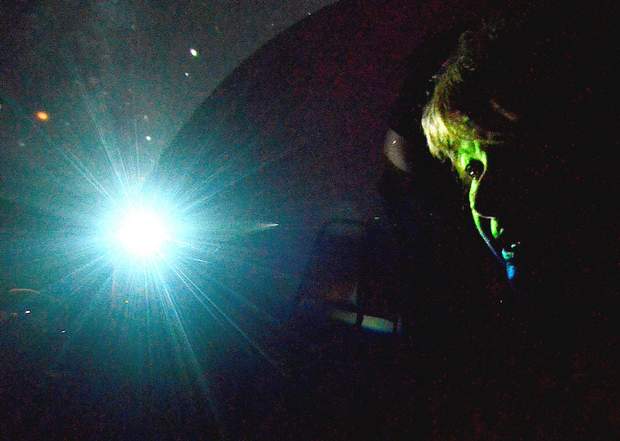
Nancy Maryboy, who is Navajo and Cherokee, says Navajo Sky allows Native Americans to “examine their own astronomy from inside their culture.”
Traveling planetarium brings folklore, science into focus
By Ann Butler Durango Herald staff writer
February 07, 2014
Studying the world – and skies – around us isn’t just the purview of Western science.
On Thursday, a traveling planetarium exhibit called “Navajo Eyes” made a stop at Durango Discovery Museum. In it, two Navajo scientists, Nancy Maryboy and David Begay, shared the results of more than 25 years of research into how their ancestors studied and learned from the stars.
It was the first step in what the museum hopes will be an ongoing look at science as practiced by the first people in the Southwest, from astronomy to irrigation and agricultural techniques.
“We want to expose people to the kind of science and experimentation that was happening here,” said Nathan Schmidt, marketing and communications manager at the museum. “At the same time the Greeks were looking at the stars, Native Americans were, too.”
Maryboy and Begay, under the auspices of the Indigenous Education Institute and in partnership with the University of California, Berkeley’s Space Sciences Laboratory, have spent four years under a grant from NASA creating several modules about the Navajo, or Diné, understanding of the cosmos.
They collected numerous oral histories and used friends and family members to help with the voice recording.
“We had an advantage over most archaeoastronomers,” Maryboy said, “because David’s so fluent in Navajo and it’s all so embedded in the language. Navajo is a quantum language, and we had to go through layers to fully understand.”
A relative of Maryboy’s, Kenneth Maryboy, read the voice of Coyote, whose mischief disturbed the harmony of the cosmos. In his day job, he’s a county commissioner in San Juan County, Utah.
Begay and Maryboy have been invited to set up their planetarium at the Smithsonian’s Air & Space Museum and the National Museum of the American Indian in addition to smaller museums across the country.
The similarities and commonalities between the different cultures was striking. The Greeks called the Pleiades the “Seven Sisters,” the Navajo call them the “Seven Little Boys.” When the constellation lies on its side so that the “rabbit tracks” show, it’s all right to begin hunting because the fawns are old enough to survive if they lose their parents. The seven stars also refer to the dots on the hind quarters of a fawn, reinforcing the hunting schedule.
“It’s easy for people to hear about this and think about it as folklore,” Schmidt said. “But the way it was explained to me, and it makes sense, is by looking at Chimney Rock. It required incredibly precise measurements and knowledge of the stars to so perfectly align with the summer and winter solstice. It may have been used for religious purposes, but it’s pure science.”
An incorrect address for the Navajo astronomy research project was given in an earlier version of this story.
